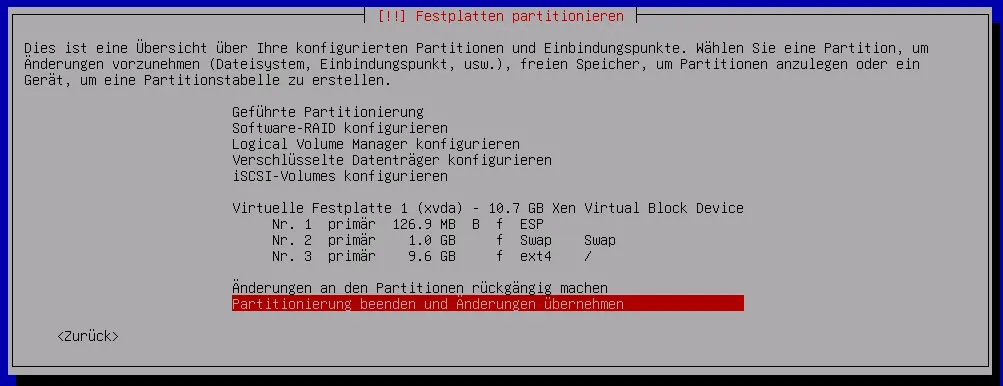2.0 KiB
| title | visible |
|---|---|
| Debian create new template | true |
[toc]
This guide focuses on creating a new template for Debian that can be used with XCP-ng.
VM Creation
Before even starting the installation, a new VM has to be created.
I choose the Other install media template and set the Distro name prefixed with "CR".
The usual sizing is 1 vCPU and 1 GiB RAM.
Add a network interface in the most commonly used network.
Add a disk, a size of 10 GiB is a good starting point.
Finally in the advanced settings, change the boot firmware from bios to uefi
Installation
Most of the installation can be done as usual, though some parts must be observed.
The root user will get a password. We also create a new non-root user.
For partitioning, choose the manual method.
The following partitions should be created, all of them as primary partitions.
- Type EFI 128M
- Type Swap 1G
- Type EXT4 remaining space
Accept the created partitioning
The reason for this layout is so Cloud-init can automatically grow the root partition when the underlying virtual disk is expanded
Reboot after the installation completes.
Cloud-init
Note: Cloud-init packages are included in my base Ansible configuration
Install Cloud-init to use its configurations.
On debian the required packages are cloud-init and cloud-initramfs-growroot
More information can be found on the Cloud-init page.
Final Configuration
Ansible
To guarantee smooth operation with terraform, the Ansible playbooks server_base and xe_guest_utilities should be executed now.
Networking
Edit /etc/network/interfaces and remove the network interface defined there.
Cloud-init will create a new definition under /etc/network/interfaces.d
ISO-file
Unmount and remove the installation ISO-file.
Conversion
Poweroff the VM and go to its Advanced tab.

Before clicking Convert to template, creating a clone is recommended.
